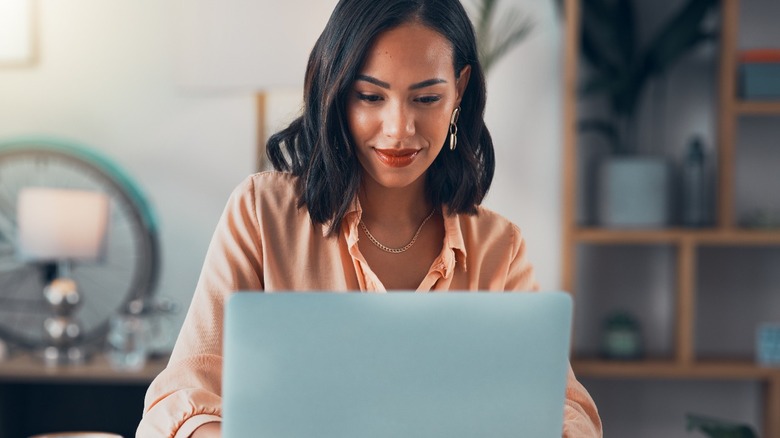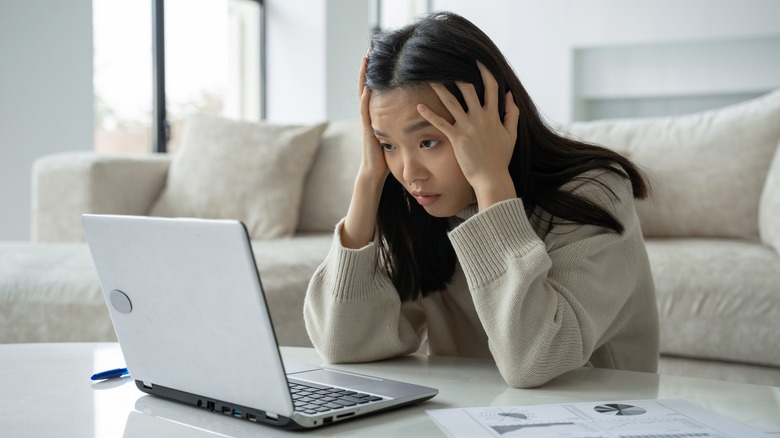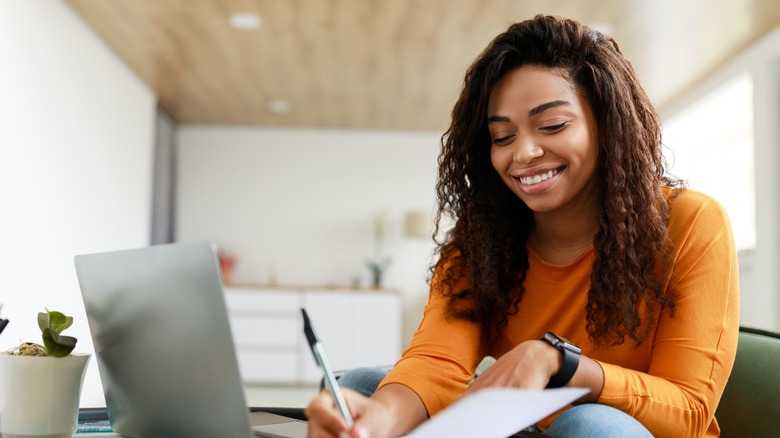'Inbox Zero' Strategy Can Calm Your Email Anxiety & Put You Back In Charge Of Your Day
We've all avoided our inbox at some point because the number of unanswered emails looming over with an all too real presence is just outright overwhelming. If this resonates with you, know that you aren't alone because email anxiety is very real. You are fully validated in the anxious hesitation you feel when you open your phone, laptop, or log onto your computer to sign into your email account.
The digital age has brought with it new realms of connection like working from home since email first launched at the end of the 20th century, reports PsychCentral. With the new form of the association presented by email — particularly as a primary avenue for many work-related correspondence matters — email anxiety and inbox-related fear have emerged and highlighted the downside to this innovative form of connection, which leads to a rapid, intense buildup in virtual inboxes.
It's strange to think of hundreds or thousands of letters sitting in a physical mailbox; it even seems unfathomable to consider receiving hundreds of letters in a short time span, but that's the unprecedented reality with email. Due to the rapid accumulation of messages in a virtual inbox, it's not uncommon for people to experience feelings of anxiety. Luckily, the "inbox zero" method can help alleviate email anxiety.
Understand your relationship with your inbox
Before incorporating the "inbox zero" strategy to help you contain email-related stress, you'll benefit most from the method if you spend some time understanding the underlying reasons why you're anxious or afraid to confront your inbox. According to the Cleveland Clinic, underlying reasons for email-related anxiety vary, from pressure to respond to every message efficiently and perfectly to fearing the lack of emotional intonation and inflection in electronic messages, which leads to anxiety over how the recipient could perceive your message.
Electronic communication can exacerbate social anxiety since the sender has comparatively little control over the recipient's interpretation of an email, experiencing anxiety from catastrophizing potential messages waiting amongst the hoard of inbox count, and fearing responses won't be sent quickly enough to remain in the recipient's favor, particularly in professional correspondence.
Practicing mindfulness when addressing your inbox can make anxiety and fear less intimidating. Fretting over not yet having received a response to an email you've sent is not going to make the reply come through any faster, which is where deep breathing, meditation, and rejuvenating outlets like going for a walk allows you to focus on placing your inbox into perspective.
Creating structure around your inbox decreases anxiety
Now that you have a better understanding of email-related anxiety, you can take steps to regain your agency when checking your email rather than letting your inbox control you. Created by Graham Alcott, who is also the author of How To Be A Productivity Ninja, the "inbox zero" technique minimizes the time, energy, focus, and stress given to a virtual inbox, reports Stylist. Instead of referring to the number zero (aka keeping your inbox void of unread messages), the "inbox zero" strategy promotes the practice of zeroing in on messages in your inbox that are most important at the moment. The strategy encourages dedicating set blocks of 20-30 minutes to focus on your emails, giving zero attention to your inbox outside of the allotted times. Having parameters in place for prioritizing messages by urgency and honing email-related attention to firm times will help you regain control.
The "inbox zero" strategy is a call to action to defeat email-related anxiety by dividing the messages in your inbox into five categories. The suggested priorities are do, respond, delegate, defer, and delete. When opening your email, zero in on one priority level at a time, first tackling "do" messages involving requests you can reasonably complete within a few minutes, followed by "respond" emails to which no-hassle replies can be sent in mere minutes, "delegate" messages which can be forwarded to others for completion, flagging "defer" emails to be addressed later, and 'delete' utilizing the namesake action of dumping respective emails into the virtual bin. The trash icon sure feels good to click!
Build walls around your inbox
The "inbox zero" strategy is built upon setting inbox-related boundaries, including time spent scrolling through emails and email-related emotional energy expended. Think about the "inbox zero" method as a process of building walls around your inbox akin to barriers that prohibit zero penetration outside of defined time blocks when the drawbridge is consciously opened. Avoid exceeding half an hour in your inbox at a time, as the "inbox zero" method recognizes email can distract from productivity beyond 30 minutes of use, per Stylist. Of the boundaries to establish, begin with defining and reinforcing the ones you feel most comfortable setting, then build upon each boundary until you've regained full control over your inbox.
Cleveland Clinic reveals that numerous emails can overstimulate our brains with information and therefore defining clear boundaries with others, like co-workers, about when you'll be available to respond to emails is essential. Since the digital age and ease of internet-based correspondence very easily manufactures blurred lines between working and non-working hours, becoming confident with boundaries like avoiding professional inboxes after hours may feel uncomfortable, but remind yourself you have no reason to feel guilty. Trust that the "inbox zero" strategy reinforces your ability to enjoy life outside of work without the pressure of checking email 24/7 hanging over you like an email version of Eeyore's raincloud. Clarify boundaries with yourself, setting alarms for signing off emails, journaling to process anxiety-related feelings, and consulting with a mental health professional for additional support.



